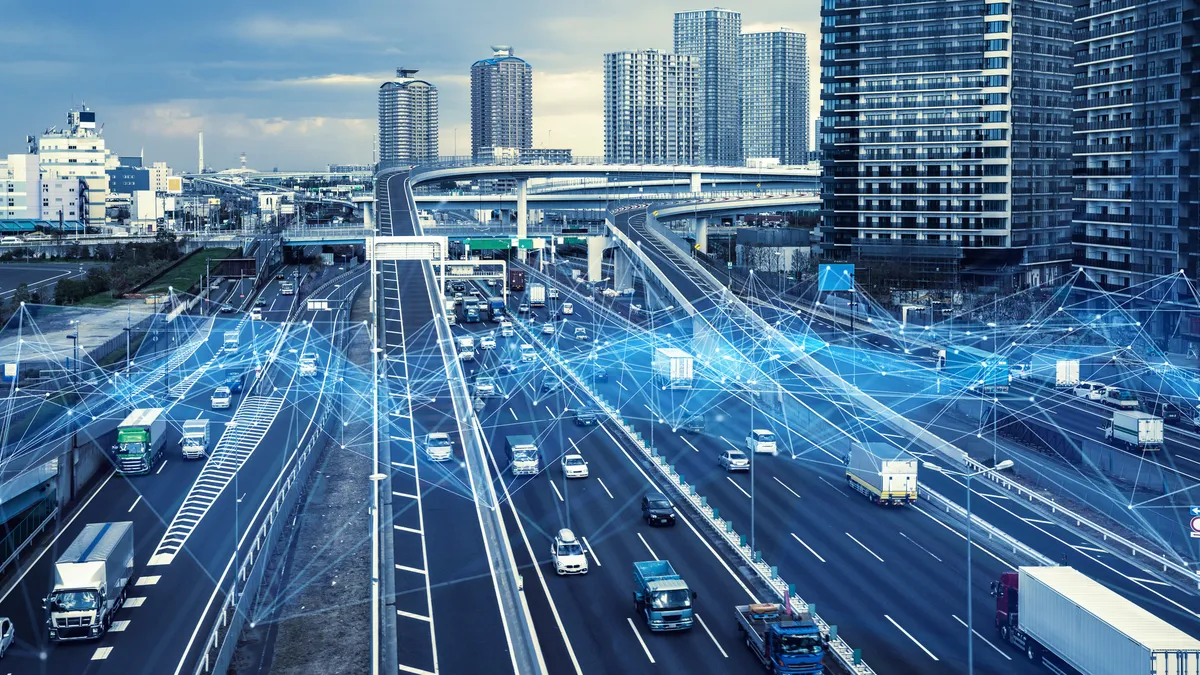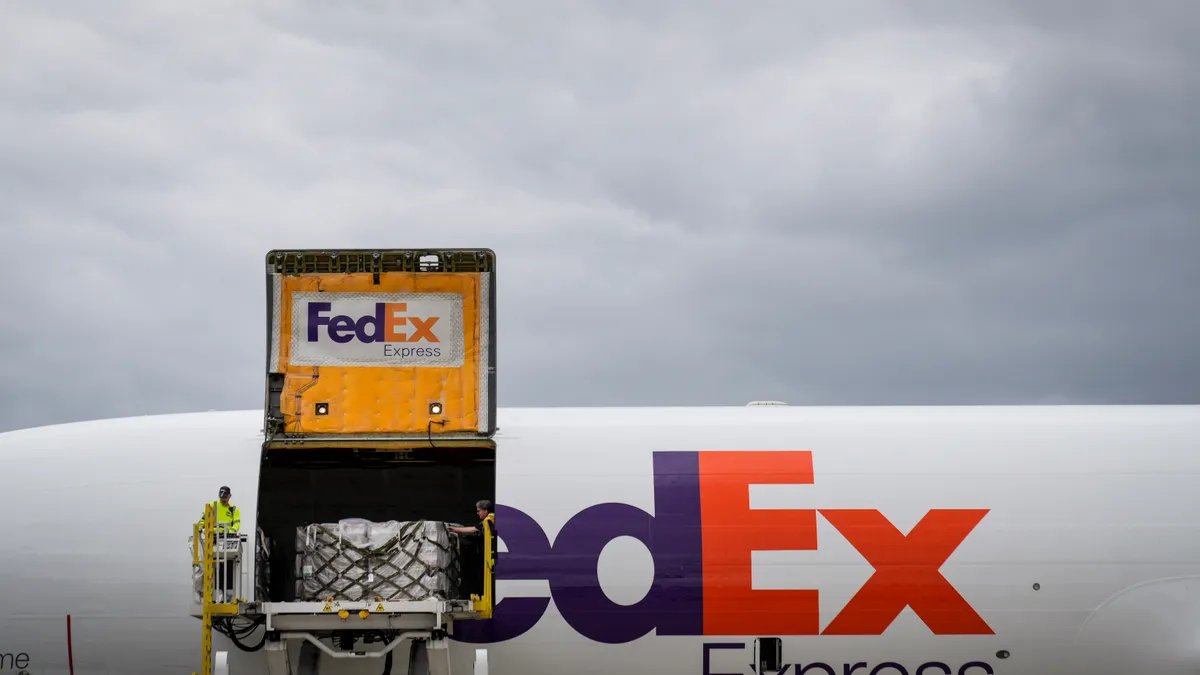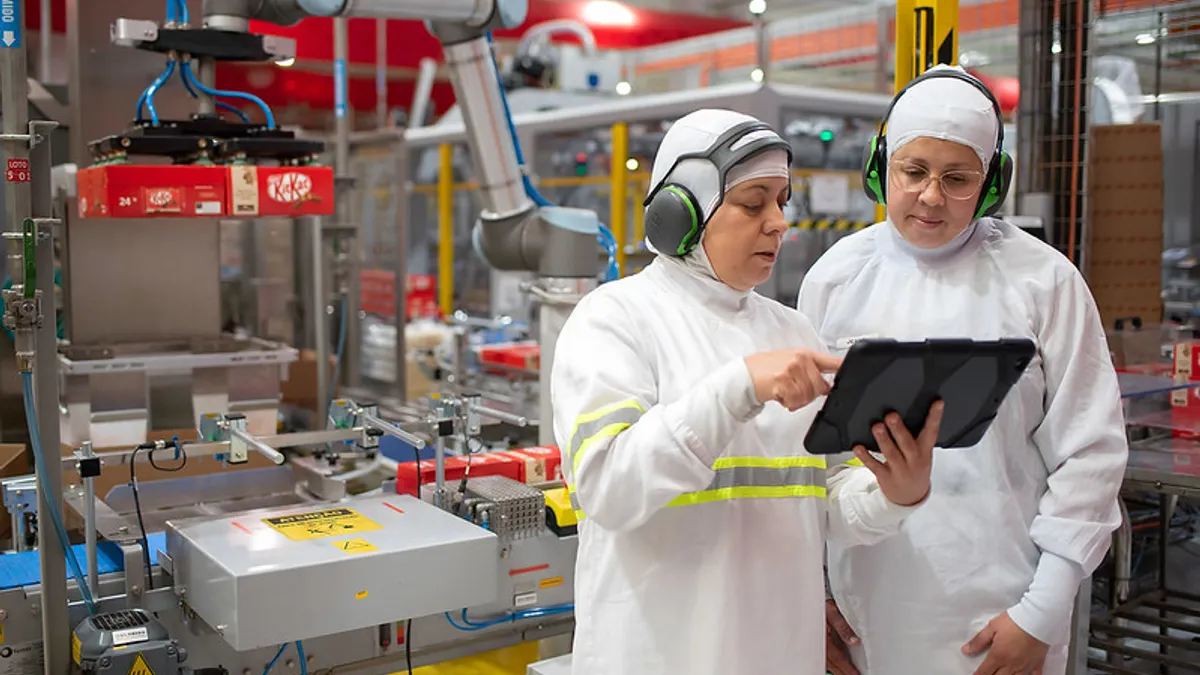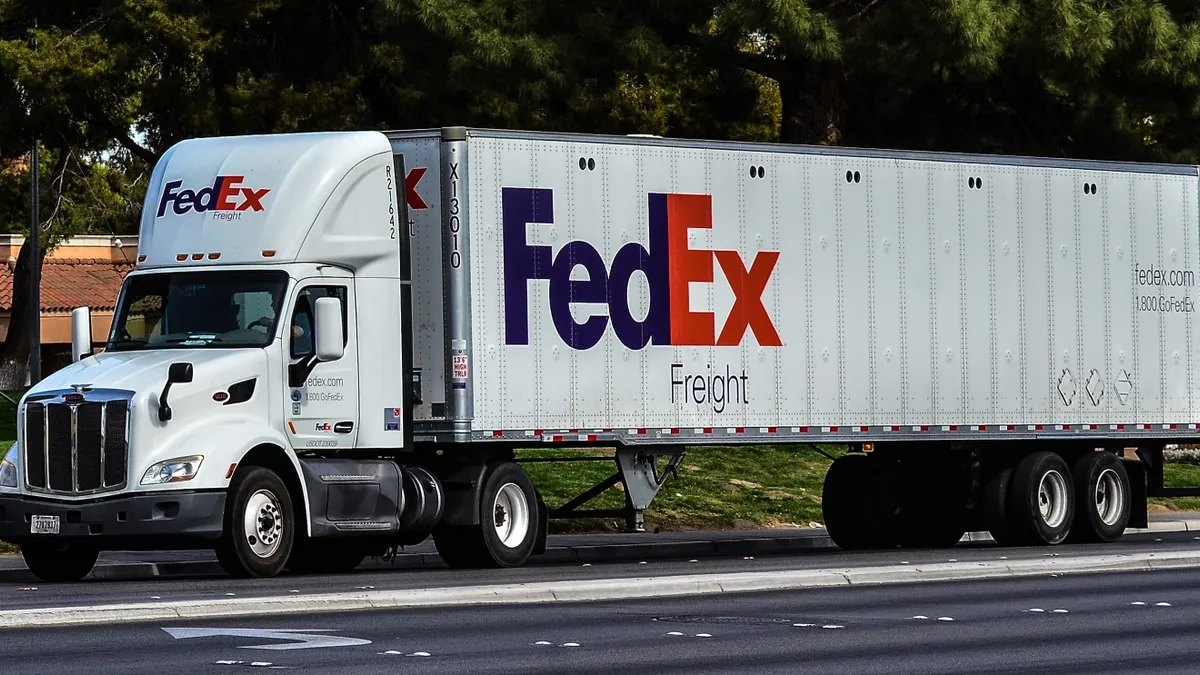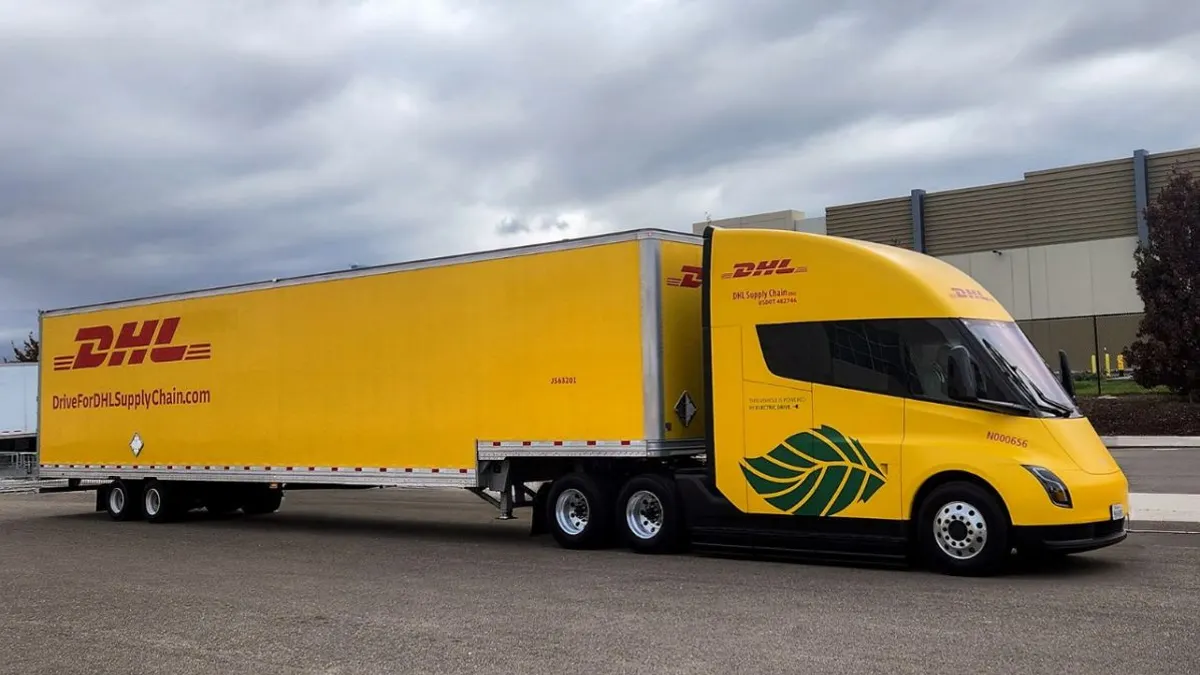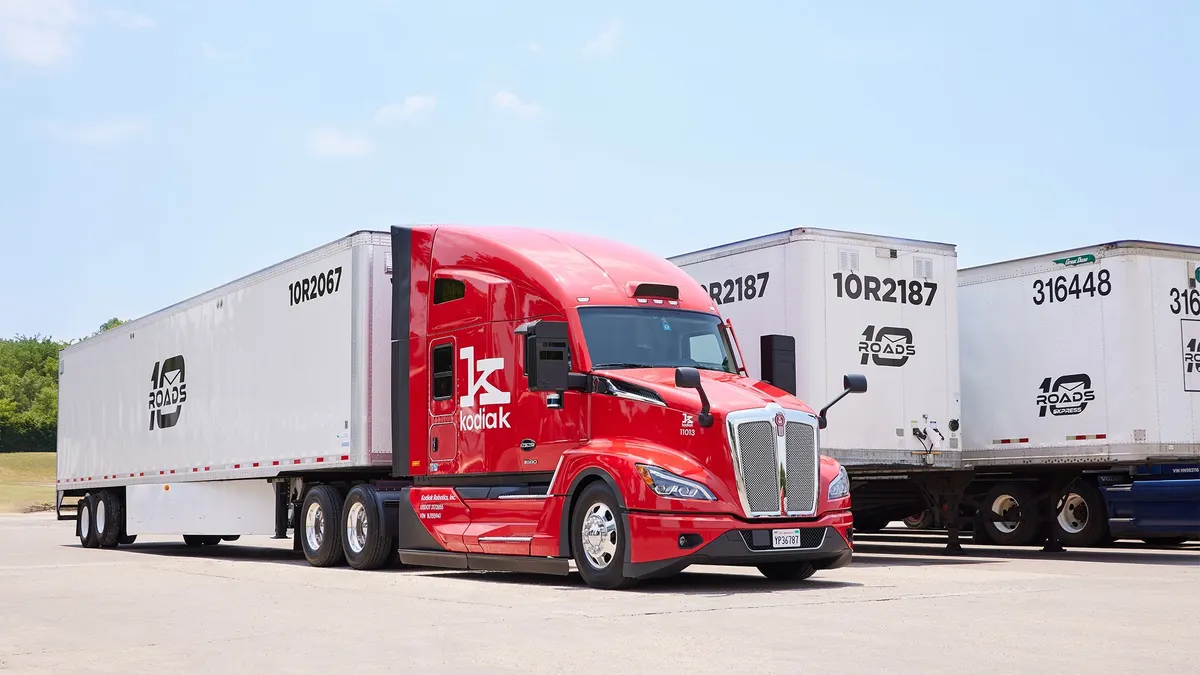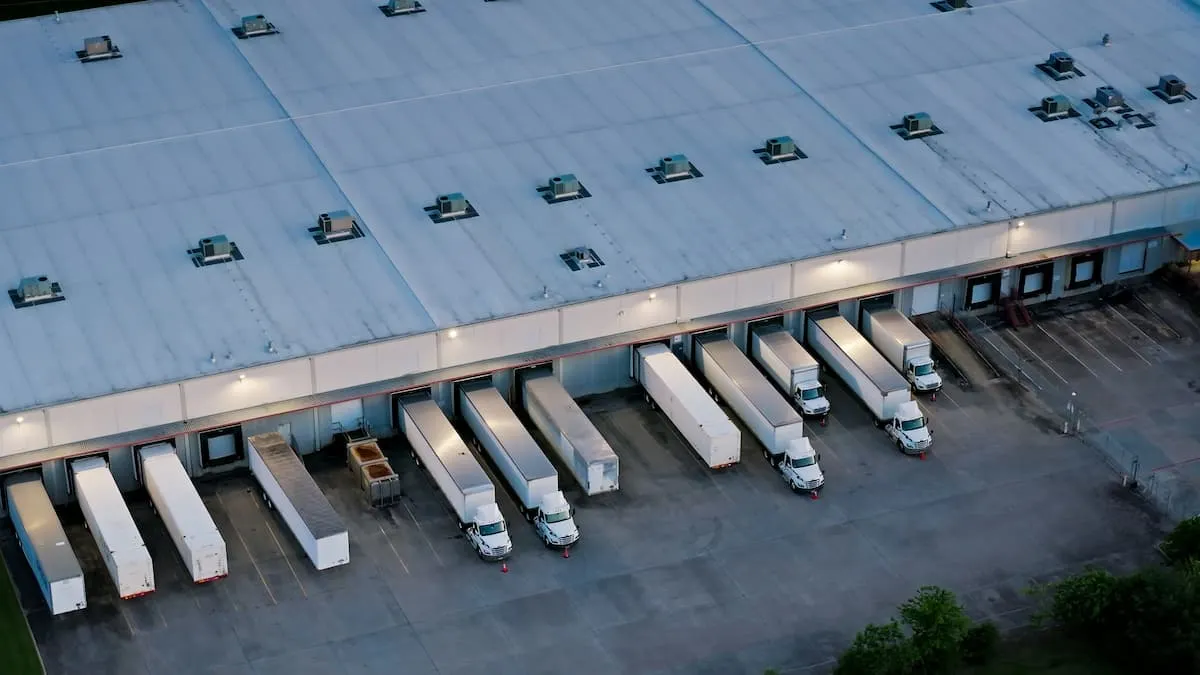Transportation management system providers have heard their customers loud and clear: Shippers and carriers want to integrate emerging technology like artificial intelligence into their systems to keep supply chains moving smoothly.
“We consistently hear from our customers that driving more visibility, efficiency and automation across their supply chain operations is a top priority,” said Srini Rajagopal, VP of logistics product strategy at Oracle.
Supply chain stakeholders are advancing AI adoption with generative AI, which uses existing data to generate responses.
The advantage of generative AI is that any user, not just a tech specialist, can query and interact with the system. Customers of supply chain technology provider Blue Yonder, for instance, “have long been asking for a more intuitive UX that doesn’t require specialized expertise,” said Product Director Vishal Jadhav. With generative AI and natural language, TMS customer workflows become “more accessible and adaptable.”
Industry adoption is still in its early days, with large shippers and TMS vendors implementing generative AI over the last one to two years. Uber Freight, for instance, introduced its generative AI solution in 2023. Oracle first announced its generative AI tool that same year and agentic AI capabilities in 2024.
As the technology develops and adoption gains steam, players across the supply chain are realizing the plethora of potential use cases.
“Technology advancements are coming fast and furious,” said Britain Pavlic, director of transportation technology and strategy at enVista.
Scratching the surface
Generative AI is gaining traction across the supply chain as teams increasingly recognize the technology’s value. A Deloitte study published in November 2024 that surveyed more than 200 executives found 75% of companies have at least one broad or limited implementation of generative AI in their supply chain functions. Another 16% of executives said they were piloting a supply chain application.
A lot of generative AI is about experimentation and iteration. “There’s no perfect plan or being fully prepared,” Brad Little, founder of Dynasty Pro TMS, said. Building, tearing down, rebuilding, testing and learning are all integral parts of the process.
Shippers and TMS providers see near limitless possibilities for generative AI to enhance transportation management. According to experts, the technology could provide:
- Proposed strategies to cut transportation costs by finding hidden opportunities in data
- Proactive solutions that anticipate shippers’ needs and identify potential issues before they happen
- Resolutions that identify breakdowns when a shipment wasn’t received at the scheduled time, without a person manually going through each touch point to find the issue
- Optimized transportation schedules, using AI to process enormous amounts of data and make recommendations
Chris Orban, co-founder of JourneyTMS sees generative AI in the TMS leading to supply chains that embrace “the best of both worlds” — one where AI processes vast amounts of data and generates recommendations, and a human makes a final decision based on their knowledge of what’s best for the business.
Ease of use
A key benefit of generative AI is its ability to create a natural, conversational experience for users. Within a TMS, generative AI allows shippers and carriers to converse with a chatbot to understand market trends or performance metrics.
Sirisha Machiraju, Uber Freight's director of product, described the company’s generative AI solution as a “logistics copilot.” A customer can ask it questions such as “What is my monthly spot versus contract utilization?” or “What is my live versus drop versus preload mix?” and receive a quick answer.
Uber Freight continues to add support for more complex queries and to produce actionable answers with recommendations.
Amazon, meanwhile, has developed chatbots in its shipper-facing portals, where vendors and sellers can query the status of a shipment, rather than sending an email or filling out a contact form for a support team, said Hardik Chawla, senior product manager for data platforms and integrations at Amazon. Generative AI also can produce more than just updates and data.
“Explainability is improving as a result of generative AI,” Chawla said. “Now I can talk to someone in a simplified manner, rather than throwing them a bunch of numbers. I can give reasoning behind those numbers.”
Busy executives can also leverage generative AI in a TMS to produce dashboards that highlight specific metrics and improvement opportunities, according to Pavlic.
“It really is helping customers run their business more efficiently,” Pavlic said.
Some generative AI platforms have intuitive and natural interfaces that can enhance real-time data and AI-driven predictions. JourneyTMS uses historical order and rate data to project rates on lanes not currently in the system, per Orban.
“This is true generative AI, utilizing all the information we have to create new insights for our customer,” he said.
Little said the development of Dynasty Pro TMS and its AI agent, Trucker Buddy, was based on his personal experience as a truck driver, fleet owner and manager.
Instead of wasting hours looking for truck parking, Trucker Buddy can combine load data and hours of service with nearby open parking spots. A driver could ask in natural language, “Which location can I make it to within my HOS?” and an AI-generated list offers real-time available parking recommendations.



